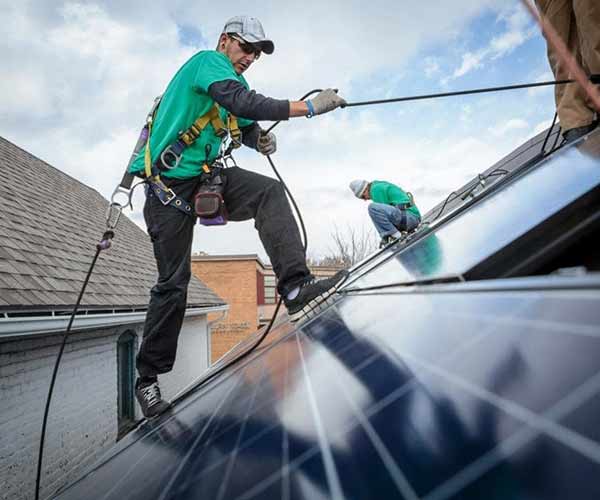A report released by the ACCC last week expressed concern over the high cost of electricity in Australia, stating:
“Australia is facing its most challenging time in electricity markets. High prices and bills have placed enormous strain on household budgets and business viability. The current situation is unacceptable and unsustainable.”
The report goes on to make recommendations to reduce electricity prices, which it blames on “excessive spending” by distribution networks and “confusing” price structures by retailers.
However, the report also points the finger at two schemes that have driven solar uptake in Australia: the Small-scale Renewable Energy Scheme and retailer feed-in tariffs.
In this post-Energy Matters looks at what these two recommendations mean for those who either own a solar energy system or are right now thinking about purchasing solar panels.
1. Phasing out Small-scale Renewable Energy Scheme
Under the existing Small-scale Renewable Energy Scheme, eligible small-scale renewable energy systems (like solar panels) may be entitled to small-scale technology certificates (STCs). These have a dollar value and can be sold to recoup a portion of the cost of installing the system.
The buying and selling of STCs is handled in a regulated market. Rather than register for this and wait for a chance to sell, it’s more convenient for households to let solar installers sell the STCs on their behalf. This is then included as an upfront reduction on the cost of installing the solar system.
How STCs affect solar panel installation cost
Let’s look at an example of how STCs affect solar panel installation cost.
In Victoria, if you buy a 5 kW solar system you are currently eligible for 77 STCs. You then multiply this by the dollar value of an STC in the market – your Energy Matters representative will be able to tell you the exact current value.
This dollar value fluctuates with the market, but for this example let’s say it’s $33.00 per STC. The calculation is therefore: 77 STCs @ $33.00 each = $2,541. So Energy Matters reduces the cost of your solar installation by $2,541.
The issuing of STCs is scheduled to be phased out by 2030. However, the ACCC recommends phasing this out nine years earlier, by 2021. If this happens, there will be an early increase in the cost of solar installations.
2. States should fund premium solar feed-in-tariff schemes
The second recommendation concerns feed-in tariffs. Households that feed electricity into the grid receive a tariff from retailers. The amount is either mandated by state governments, or electricity retailers offer it voluntarily.
Beginning a decade ago, generous premium tariffs were offered to encourage people to install solar. These have now been discontinued for new solar panel installations. Although tariffs still exist, they are much lower than these historical premium tariffs.
The ACCC report recommends that retailers not pay these premium tariffs anymore. Instead, they want all states to follow Queensland’s lead and fund the premium tariffs out of the states’ budgets.
Will the states continue to pay?
The possibility is that states will refuse to pay the premium tariffs and simply end those particular schemes. This comes at a time when people with solar are also installing batteries to take advantage of storing energy.
Fortunately, over the past decade, there has been a drastic reduction in the cost of solar panels and a huge rise in power prices. This means the reduction in feed-in tariffs has not had such a huge impact on people’s decision to install solar.
Those people with solar who are on premium tariffs are already realizing the benefits of saving on high electricity prices. Their independence from the retailers has in some cases put their energy bills into credit.
Consequences for solar panel installations
The ACCC recommendation to close the STC scheme would have a big effect on the cost of solar panel installations.
Ending the scheme will make it harder for households to pay the upfront cost of installing solar panels. It will also widen the gap between those who use solar panels to reduce electricity bills and those who cannot afford them.
What this means for solar panel installation cost
In the light of the ACCC report, now is a good time to take action to cut your power bills. Installing solar panels now allows you to take advantage of the STC scheme, before the value of these certificates declines.
If you would like to know more about the benefits of installing solar panels, get in touch with Energy Matters to discuss the possibilities on 133 786.















Comments